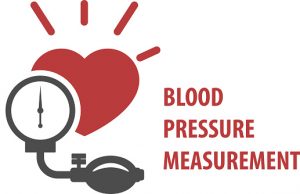 One of the greatest risk factors for the development of life-threatening conditions such as heart disease and stroke is an increase in blood pressure. Nearly 75 million Americans currently suffer from high blood pressure, and only half have the condition under control.
One of the greatest risk factors for the development of life-threatening conditions such as heart disease and stroke is an increase in blood pressure. Nearly 75 million Americans currently suffer from high blood pressure, and only half have the condition under control.
The diagnosis of high blood pressure is typically set at 140/90, but new guidelines from the American Heart Association (AHA) and the American College of Cardiology (ACC) now define high blood pressure as 130/80. This is the first update to the U.S. guidelines on blood pressure detection and treatment since 2003.
Advertisement
This effectively lowers the threshold of hypertensive cases, meaning millions of more Americans will now be classified as having hypertension.
Changing guidelines for the better
Blood pressure is the force of blood against vessel walls and is typically measured in millimeters of mercury. Values are given in two respects: one for systolic blood pressure—top number, and the other for diastolic—bottom number, meaning the force during a heartbeat and the force during rest, respectively. Typically, a normal blood pressure reading is considered to be 120/80, but an individual’s normal range may vary. The systolic blood pressure is commonly seen to rise as we get older, with diastolic showing a slight decline.
The new guidelines stress that for most patients now classified as being hypertensive, the recommended treatment is lifestyle changes. This will primarily mean changes in diet and weight loss. Medication will only be used when conservative treatment options fail.
“There is a growing body of evidence that lower blood pressure is better for your health,” said Dr. Steven Houser, the immediate past president of the American Heart Association.
This change to the guidelines was the result of three years of rigorous review of nearly 1,000 studies on the subject. The following categories are now considered the standard for blood pressure measurements:
- Normal: Less than 120 mm Hg for systolic and 80 mm Hg for diastolic.
- Elevated: Between 120-129 for systolic, and less than 80 for diastolic.
- Stage 1 hypertension: Between 130-139 for systolic or between 80-89 for diastolic.
- Stage 2 hypertension: At least 140 for systolic or at least 90 mm Hg for diastolic.
Having high blood pressure puts you at significant risk
The point of lowering the threshold is to reduce risk in patients. A 2015 study known as the SPRINT trial found that patients aimed to lower their systolic blood pressure to around 120mmhg were 27 percent less likely to die during the study period, compared to those who aimed to have their blood pressure to less than 140mmhg.
Advertisement
People with blood pressure between 130-139/80-89 are considered to have double the risk of cardiovascular disease complication compared to those with normal blood pressure.
“We want to be straight with people—if you already have a doubling of risk, you need to know about it. It doesn’t mean you need medication, but it’s a yellow light that you need to be lowering your blood pressure,” said Dr. Paul Whelton, a professor of global public health at Tulane University and lead author of the guidelines.
Related: Understanding blood pressure readings key to overall well-being
[adstoappear]